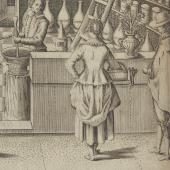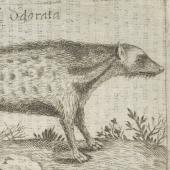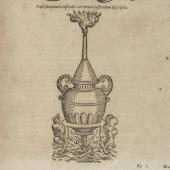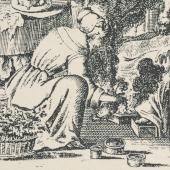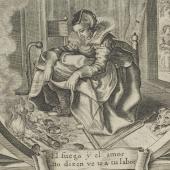Introduction
Smelly Remedy: Womb Fumigation Illustrated in 17th Century Print
In the seventeenth century, the womb was regarded as a troublesome and unpredictable organ. Women were believed to be afflicted with ailments including ‘suffocation’ or ‘strangulation’, where the womb supposedly moved away from its natural place. The womb could compress neighbouring organs or release noxious vapours that could cause difficulty in breathing and numerous other complications. To pacify the wild womb, marriage was usually prescribed, but a favoured short-term remedy was fumigation.
Like a second nose, the womb was considered to be attracted to pleasant perfumes and repulsed by stench. A womb could therefore be coaxed back to its rightful place through wafting fragrant ingredients beneath it. Women were recommended to simultaneously smell rancid substances to chase the womb downwards.
The interest in fumigation may have increased in popularity as European merchants returning from distant lands imported greater quantities of fragrant ingredients to stock apothecaries. These substances delighted the nose and in turn increased the desire for fumigation, as their exoticness yielded great therapeutic potential.
Although womb fumigation has been practiced since at least 2,000 BC, the printed illustrations displayed here evidence some of the earliest instances that the remedy was visually represented to a wide readership.
This exhibition was curated by Lizzie Marx, PhD student, and winner of the Art History/University Library Curatorial prize 2018. See Lizzie talk about her research on the movable womb in this video.
